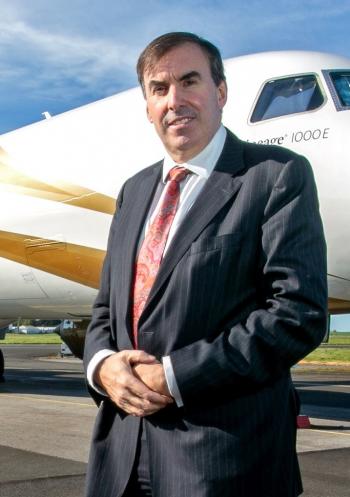OP-ED: Aviation Sustainability Goals Must Still Be Pursued

The eruption of Indonesia’s Mount Tambora in 1815 propelled enough volcanic dust into the atmosphere to visibly darken the sun and cool the global climate in the subsequent months, leading 1816 to be described in contemporary accounts as “The Year Without a Summer.”
For the world’s aviation and tourism industries, COVID-19 has made 2020 the year without a summer. But once the dust of COVID-19 begins to settle (as it one day must), what does the global airline landscape look like? What should it look like?
Only recently, aviation was wrestling with challenges of growth and sustainability: How to decarbonize flying to keep emissions under control, while maintaining projected global traffic growth rates.
That conundrum hasn’t gone away. A virus-driven temporary cut in air traffic is no substitute for lasting emissions-reduction measures, and this is still the time to consider what a sustainable post-COVID-19 airline industry should look like.
Governments the world over are going to find themselves compelled to dip into the public purse to save “their” airlines. We will see a return of aero-nationalism. But she who pays the piper calls the tune, and what will governments look for as a quid pro quo for a financial lifebelt?
An obvious ask is a greater alignment between government policy and airline behavior—and the divide is stark. The European Union’s European Green Deal calls for major structural change to deliver climate neutrality by 2050. Against this, consultancy Roland Berger projects that if other industries decarbonize in line with some projections, aviation could account for up to 24% of global emissions by 2050 without major evolution in aircraft technology.
Industry-driven measures to date, such as ICAO’s global offset-based scheme CORSIA, are “too little too late,” while greenwashing abounds (witness Ryanair’s claims to be Europe's greenest airline in terms of emissions per seat, even though it is the first non-coal company to join a list of Europe's top 10 carbon emitters).
Paradoxically, the coronavirus pandemic will make CORSIA a tighter constraint than expected. Back in 2016, ICAO defined the emissions baseline—against which any future aviation emissions growth would be offset—as the average of 2019’s and 2020’s flying. But with the world’s fleets grounded for a good fraction of 2020, that baseline will be far lower than expected—meaning more impetus to reduce emissions.
Coupled with a wave of partial or total renationalization of airlines, we’re therefore likely to see a new impetus for airlines to “walk the talk” in terms of emissions. This also brings difficult questions of consistency for governments as airline shareholders: If the national policy goal is to reduce emissions, how can a state-owned company be allowed to grow emissions at the same time?
The shared goal of all stakeholders should be to decarbonize aviation, not punish it, and the challenge for a struggling airline industry will be to ensure it is not further burdened with unfocused “sin” taxes.
Offsets are an imperfect, controversial and short-term sticking-plaster. Large electric and hybrid production aircraft are decades away, so there will be increasing pressure to quickly scale up availability of more cost-effective sustainable and synthetic fuels. Mechanisms to do so—such as an industry-driven financing structure for sustainable-fuel production infrastructure—are likely soon to see the light of day.
Developing the supply side of the carbon-neutral fuel equation can enable, and dovetail with, more enlightened policy and taxation approaches—for example, reducing taxes for aircraft using sustainable fuel and, conversely, increasing them for aircraft choosing to use nonsustainable fuel—but this only makes sense if the sustainable alternative is available in quantity.
This would be a huge change, but we can no longer say that it’s an impossible one. The coronavirus-induced economic downturn has not only showcased how quickly global pollution levels and oil consumption can fall, it has also shown how once unthinkable policy measures can be quickly agreed and implemented, and it has already begun to irrevocably reshape many industries, airlines more than most.
A pandemic is defined as an affliction whose effects are global or near-global. Our focus today is naturally on fighting the current COVID-19 pandemic, but climate change is ultimately a deadlier long-term global affliction.
In this time of adversity, dislocation and uncertainty, we have a one-off opportunity to set the airline industry on a more sustainable long-term course. Aviation is surely too important to our world for us not to make every effort to do so.
Patrick Edmond is managing director at Ireland-based Altair Advisory. The views expressed here are his own.
Comments